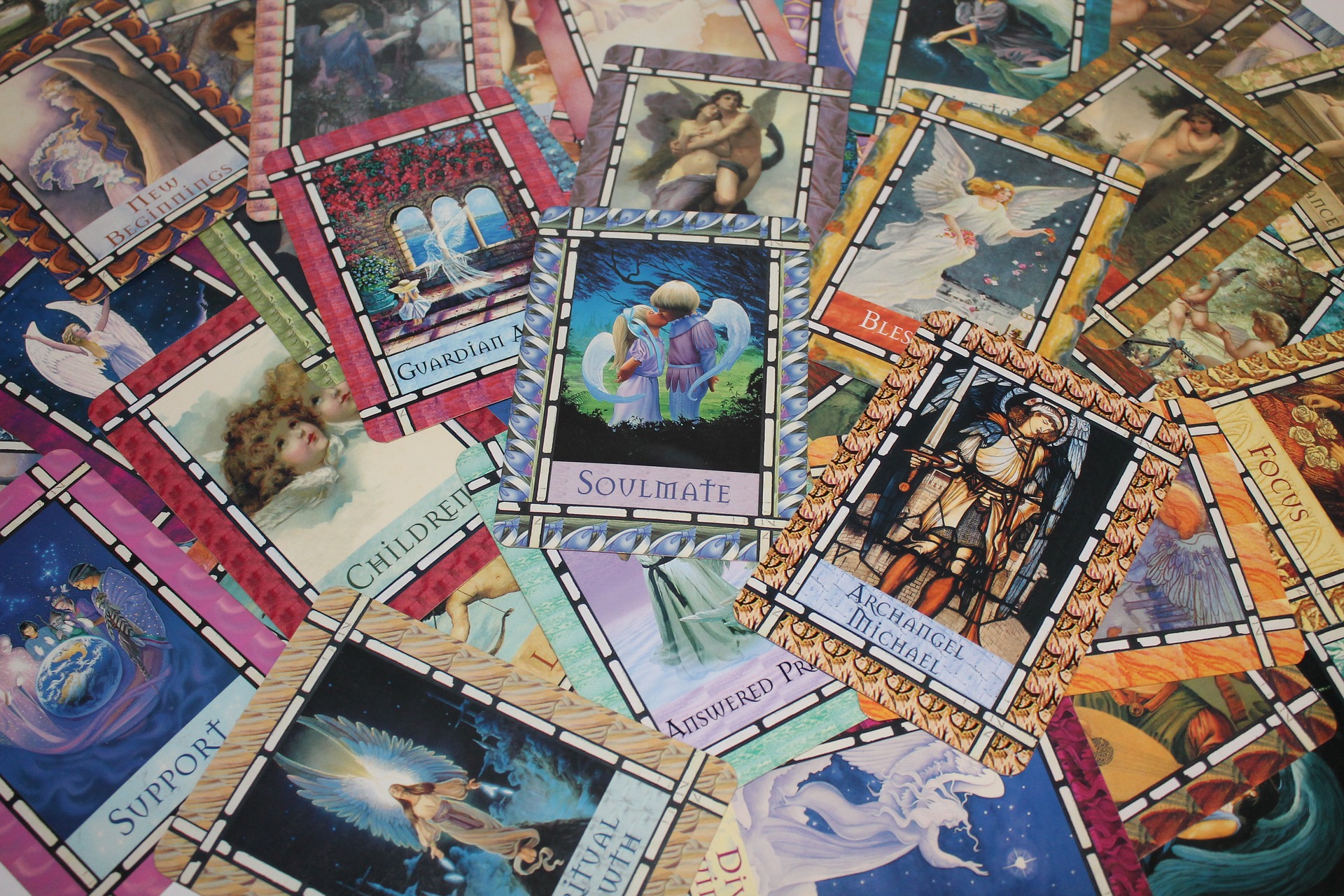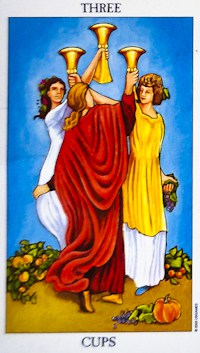 Submitted by Vigilant Seer on
Submitted by Vigilant Seer on

Enter a fancy, postmodern art gallery.
A variety of pieces are in front of you, perhaps filling up the vast majority of the room. Some pieces are complex, daring, intricate, and stirring, and others seem like regurgitation, no matter what kind of skill was used to create it. Filling in all the empty spaces around the artwork, there are a variety of people (the subtleties of which can perhaps be described as the art was), who are “enjoying” the art. “Enjoying” seems to characterize an amalgamation of mechanical critique based off of an intuitive response to the art.
Suppose that there is a specific piece that has caught your attention. It is a woman in a scarlet red dress, staring through the dimensions of the artwork, directly at the viewer. Her gaze is seductive, alluring, with a subtle yet potent aura of something deeper–as if she represents something yet unknown to you, and perhaps ecstatic, painful, or both. There is nothing overtly sexual about the artwork, other than the woman’s radiant beauty and the curves of her body that your eyes naturally follow as you intuitively gauge the piece in a flash of a moment, and not too much longer. What was your analysis of the piece?
There is of course, in a sense, an endless variety of interpretations for what this piece of art represents–but this is only half of that sense. The truth of the matter is that all people analyze symbolism within the same nature of syntax that allows them to understand, process and communicate language. Strangely, while this syntax of visual symbolism is the literal definition of language, the fact that a person can apply this same empirical syntax to the symbols created in their environment to discern a cohesive and coherent statement is something that seems outlandish indeed to many individuals still. This is merely due to an in-comprehensive analysis of the subject, and as an example of this: aren’t any publicly educated children taught about the Egyptian hieroglyphs?
The knowledge that is taught about these glyphs is hardly adequate in public education, but the idea is still impressed nonetheless. What, therefore, allows an individual to rationally separate an Egyptian language of symbols with the language of symbols that they are constantly bombarded with everywhere within corporate mainstream media, and even elsewhere? Rationally and empirically, there is not a way to separate the symbol from an inherent context in the brain; and this “context” of the symbol is represented by many as the research into the “human collective unconscious” by psychoanalyst Carl Jung (who in turn was inspired by esoteric principles).
In the same way that a restaurant can have no business all week, and then have one day full of business that seems to be entirely spontaneous; or in the same way that trends build within society as a general overarching principle, so is there syntactical understanding of the symbolism that has its foundations in postnatal neuronal development and the forthcoming human social adaptation that occurs throughout the life period. Before a person begins cultivating their egoistic nature as a tool to help them perceive and interact with culture and society, they must first lay down the groundwork that is prerequisite knowledge for an individual to begin contextualizing and synthesizing the microcosm of individuated consciousness.
To put it simply, the subtleties of the individual cannot be understood until the collective of individuals is understood; and the collective of individuals cannot be understood until the causal mechanisms of nature are perceived through the human consciousness. This could as well be represented as layers of the consciousness, or even like layers of sediment that create the Earth’s crust. As the old saying goes: One cannot adequately understand something until they are looking at it from an exterior/outside perspective, whether this be literal or metaphorical. In general, this can be considered as “objectivity.”
Paralleled with occult philosophy, the foundations that are formulated during the postnatal developmental period, since this is the most impressionable period for a brain during the life period, could be considered the latent understanding of the “Macrocosm,” which can in turn be considered as the causal mechanisms of nature from the perception of the human consciousness. The “microcosm” of the macro/microcosm dichotomy would be generally considered the human consciousness, although the dichotomy remains a bit more nuanced than this in its entire scope.
Step back into the art gallery for a moment, and recall the seductive woman in the scarlet dress that had been painted. It has already been addressed that from a microcosmic perspective, the variety of interpretations might widen, but even this would be a marginal variance. Most people, after all, would not perceive a great deal of masculinity in the art piece, if any, nor would it likely remind anyone of a sirloin steak. Despite the variances, nearly anyone would stay within the interpretations of femininity of a cultured sense. This recurring thread that can be seen holding the variety of interpretations together under overarching themes, can be seen as the macrocosmic perspective playing its synthesized role in the microcosm.
While it has only been briefly mentioned so far, the content of this article can be considered esoteric/occult knowledge, and for those who have still not put it together yet: esoteric/occult tradition largely embodies the following: an understanding of the choreography of mental faculties; the role that this choreography plays in the formulation of collective faculties; and by proxy, how to utilize these symbols to an individual will. In short, esoteric knowledge is a comprehensive understanding of both the subjective and objective significance of ancient symbolism, which can as well be considered modern day symbolism (go figure). In this sense, the subjective/objective dichotomy can be represented as well as the micro/macrocosm. Magick in its authentic esoteric sense, is the utilization of the understanding of these symbols to orchestrate exterior events from the present moment. The dividing line between “light/white” and “dark/black” magick is how an individual utilizes this understanding.
What some may have noticed from the beginning of this article, is that the “Scarlet Woman” is one of the primary archetypes in esoteric tradition, and is represented as the Three of Cups in the Rider-Waite Tarot Deck. To those who are unfamiliar with this terminology, it may be surprising to know that this was the actual picture that was on display at the metaphorical art gallery.

http://www.thelastamericanvagabond.com
From this esoteric context, the Scarlet Woman embodies the Sacred Feminine Principle, embodied by the 3 as a representation of the Trinity principle in metaphysics (mother, father, child / past, present, future / creation, preservation, dissolution, et cetera) and the scarlet represents the raw energy of alchemical transformation through self-realization. In contrast and supplement, the Scarlet Woman is also considered the Sacred Whore or the Mother of All Abominations, because as the creation principle embodies all good in existence, so too does it embody all evil. In this sense, when the archetype of the Scarlet Woman/ Divine Mother/ Sacred Whore is presented to the perceived (especially in Tarot), it tends to bode a sort of initiation into a deeper level of understanding in a contextual sense. This level of understanding, depending on the circumstances, could signify a great deal of hard work that needs to be done, or the fruition of hard work already in action. More information on the Sacred Feminine Principle archetype can be seen here.
In consummation, the meta-analysis of symbolism is comprised of the sacred esoteric Divination Sciences, which are: Tarot, Numerology, Astrology, and the Tree of Life. Also crucial to the understanding of symbolism divination, are the Procession of the Equinox as embodied by the Zodiac side-reel, and the often un-discussed roots astrology, which is called “astro-theology” and represents the original formations of the macrocosmic principles through the perception of the human consciousness.
Tarot, being a system of traditionally 78 cards, stands as perhaps the most comprehensive collection of these symbols that embody the human perception, and numerology remains an intrinsic classification function of these divination sciences, as well as holding its own category. These four empirical sciences of the microcosm/macrocosm, are of course not accurately represented in mainstream new age ideals on the subject. As it has always been throughout history, one must seek out true understanding by their own will alone. As a final word, it should also be said that these four aspects of divination are not considered to be studied or practiced in their entirety unless all four are engaged at once.
Regardless of a one’s personal inclinations, it is important to remember that there has always been and will always be those who understand the esoteric science of symbolism; and that those who do understand the esoteric science will always be using it, whether this be for good or bad reasons. To this end, those who continue to embody symbolic illiteracy will continue to remain at an inherent disadvantage.
Anthony Tyler
http://www.thelastamericanvagabond.com/outside-the-box/understanding-science-symbolism/
- 622 reads